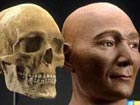| Videos | • Latest |
|
• Feature | • Sports | • Your Videos |
Cuban mummy finally rests in peace
Buried, unearthed, decapitated, and restored a rare Cuban mummy finally rests in peace. Josefa, as the mummy is now known, has undergone a turbulent journey that involved posthumous fame, and cost her head before landing in a quiet, air-conditioned room in a museum.
Josefina Petronila Margarita Ponce de Leon Heredero has lived a longer odyssey in death than she ever did in life. When she died in 1872 in Havana, her body was mummified and placed in a cemetery in Matanzas, a town where she spent much of her life. The mummy sat in its niche for almost a century before a cleaning crew found it in 1965.
Her circuitous trek to this museum came after an extended stay in the house of Ercilio Vento, a forensic doctor who went beyond the call of duty to preserve the mummy.
Ercilio Vento, forensic doctor and historian, said, "There was no place in Matanzas for them to take her. It was necessary to save her, and I made a decision that seems unorthodox, especially since Cubans are superstitious about these kinds of things. I took her home, and there she stayed for 25 years."
The well-preserved remains of what is believed to be the only intact Cuban mummy caused quite a stir around Matanzas. After its discovery in 1965, thousands passed by the tomb, but the remains were left unprotected.
Around 1980, someone stole the head and eventually destroyed it. The crime was reported and officials turned to Vento to restore the mummy.
According to Vento, mummification was in style for Cuba's upper classes in the 19th century, but few survived. This mummy may have remained intact because it was conserved with mercury bichloride.
Vento spent his free time on weekends meticulously reconstructing the head. Getting hair from a local barber, Vento said he could replace around 1,000 hairs every weekend. Five years later, Josefa had her hair back.
Ercilio Vento said, “I’m not sure all the visitors are capable of realizing her importance. If you ask me, I'd say the importance is objective because it's an archeological piece a testament to the past. It is unquestionably something we can use to investigate the past. It even frightens some people."
In her first month on display in Matanzas, some 70,000 people visited the museum.

 0
0 







Comments